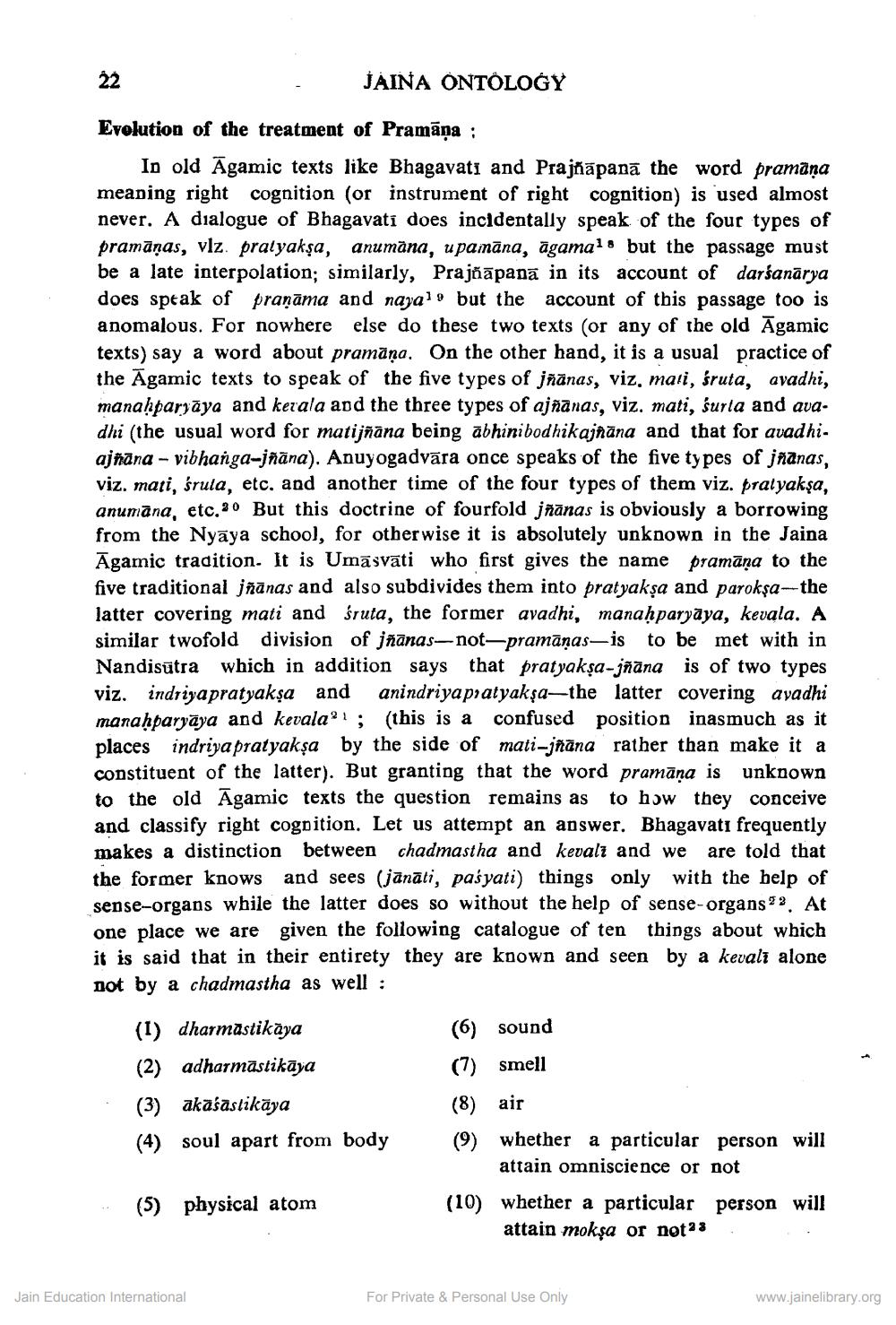________________
22
JAINA ONTOLOGY
Evolution of the treatment of Pramāņa :
In old Agamic texts like Bhagavati and Prajñāpana the word pramana meaning right cognition (or instrument of right cognition) is used almost never. A dialogue of Bhagavati does incidentally speak of the four types of pramāņas, viz. pratyakṣa, anumāna, upamāna, agama1s but the passage must be a late interpolation; similarly, Prajñāpana in its account of darśanarya does speak of praṇāma and naya1 but the account of this passage too is anomalous. For nowhere else do these two texts (or any of the old Agamic texts) say a word about pramana. On the other hand, it is a usual practice of the Agamic texts to speak of the five types of jñānas, viz, mati, śruta, avadhi, manaḥparyaya and kevala and the three types of ajñānas, viz. mati, surla and avadhi (the usual word for matijñāna being abhinibodhikajñāna and that for avadhiajñāna - vibhanga-jñāna). Anuyogadvāra once speaks of the five types of jñānas, viz. mati, śrula, etc. and another time of the four types of them viz. pratyakşa, anumana, etc.30 But this doctrine of fourfold jñānas is obviously a borrowing from the Nyaya school, for otherwise it is absolutely unknown in the Jaina Agamic tradition. It is Umasvati who first gives the name pramāṇa to the five traditional jñānas and also subdivides them into pratyakṣa and paroksa-the latter covering mati and śruta, the former avadhi, manaḥparyaya, kevala. A similar twofold division of jñānas-not-pramāņas-is to be met with in Nandisutra which in addition says that pratyakṣa-jñāna is of two types viz. indriyapratyakṣa and anindriyapratyakşa-the latter covering avadhi manaḥparyaya and kevala; (this is a confused position inasmuch as it places indriya pratyakṣa by the side of mati-jñāna rather than make it a constituent of the latter). But granting that the word pramāṇa is unknown to the old Agamic texts the question remains as to how they conceive and classify right cognition. Let us attempt an answer. Bhagavati frequently makes a distinction between chadmastha and kevalt and we are told that the former knows and sees (jānāti, pasyati) things only with the help of sense-organs while the latter does so without the help of sense-organs*2. At one place we are given the following catalogue of ten things about which it is said that in their entirety they are known and seen by a kevali alone not by a chadmastha as well :
(1) dharmastikaya
(2) adharmastikāya
(3) akasastikaya
(4) soul apart from body
(5) physical atom
Jain Education International
(6) sound (7) smell
(8) air
(9) whether a particular person will attain omniscience or not
(10) whether a particular person will attain mokşa or not23
For Private & Personal Use Only
www.jainelibrary.org




